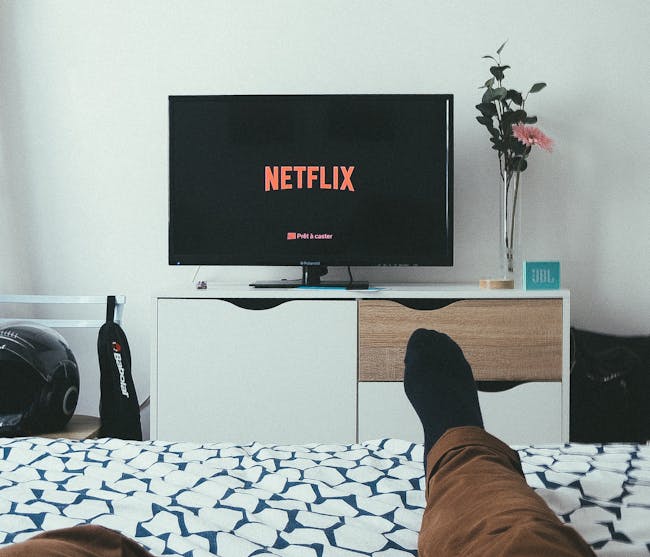There’s a big difference between sitting at home and sitting at work.
As a society, we sit too much. We sit in the car, we sit at our desks, and we flop down on the couch when we get home. But not all sitting is made equal. Each of these approaches to sitting poses a very different risk to heart health, according to research published Wednesday in the Journal of the American Heart Association.
Though sitting at a desk may feel the most punishing, the study shows that for at least one population of Americans, it isn’t occupational sitting that’s taking the biggest toll on heart health. Instead, it’s the common, sedentary evening ritual of tucking into a meal in front of the TV and watching hour after hour of whatever show that has been selected to fill the void left by Game of Thrones.

Analysis of data collected from 3,592 African-Americans enrolled in the Jackson Heart Study revealed that people who spent four or more hours sitting in front of the TV each night were 49 percent more likely to have had a heart attack than those who spent less than two hours watching TV each day.
In comparison, people who reported the highest levels of occupational sitting had no significant changes in their cardiovascular disease risk compared to people who rarely sat for work, study author Jeanette García, Ph.D., an exercise physiologist at the University of Central Florida, tells Inverse.
“Although I’m not suggesting that there are absolutely no health risks associated with lots of sitting at work, the results from our study indicate that maybe we should consider focusing on interventions that break up or reduce television viewing at home,” García tells Inverse.
Sitting at Work vs. Sitting at Home
The Jackson Heart Study followed participants for a median of over nearly eight and a half years. During that time, 129 heart attacks and 205 deaths occurred (they were grouped together in this analysis). García noted the pattern of increased risk within the data on those deaths. She thinks it likely has to do with other aspects of sedentary life that are correlated with spending long hours in front of the TV.
The big difference between sitting at home versus sitting at work is that one tends to happen without interruption. In an office, sitting at a desk may be broken up by everyday activities like going to a printer, taking a coffee break, or visiting coworkers. Sitting in front of the TV, meanwhile, is uninterrupted sedentary time. García notes that there may be additional risks that emerge from completely uninterrupted seated time during a TV binge.
“These types of activities can break up long periods of sitting, which is better than prolonged, uninterrupted sedentary time, which can occur more with television watching, especially at night when you’re tired,” she says. “Even when you’re sitting at your desk, you can be fidgeting or stretching which may not seem like much movement, but every little bit can help.”
How Society Promotes Certain Kinds of Sitting
The idleness associated with seated time aside, a host of additional health behaviors were also uncovered in García’s findings.
People who spent more time in front of the TV, for example, were more likely to be less active during leisure time, and were more likely to smoke, drink, and follow an unhealthy diet. Those with the highest level of occupational sitting, meanwhile, had the demographic characteristics of high-income desk workers. They were younger, more likely to have a healthy diet, and logged more leisure time minutes of exercise.

Furthermore, people who sat the most for work purposes were notably more wealthy than those who sat the most during leisure time. They made over $50,000 per year on average, whereas those who spent more time sitting while watching TV made less.
Taken together, these findings certainly do point to notable differences in work-based sitting and leisure based sitting, but they are also indicative of a wider collection of lifestyle factors that influence health. Some people, by nature of their jobs, spend more time on their feet at work and less time on their feet at home:
“I do feel that societal factors may play an important role here,” García explains. “It’s possible that socio-economic status may be a factor in that higher income and education tend to be linked with more ‘white-collar’ jobs that typically are in an office setting, while ‘blue-collar’ jobs typically tend to be more active.”
The more we learn about sitting, the more complicated its impact on our health becomes. One thing that’s becoming clear is that the time we spend sitting is a signifier of many other health factors beyond spending time on our bottoms. Fortunately, for those who spend more time sitting than is healthy, García’s work points to a silver lining: Roughly 30 minutes of moderate to vigorous exercise can head off sitting-related health risks.
On that front, she offers some basic advice: “Therefore, even if you don’t feel you can forego your favorite television show, maybe consider going for a brisk 30-45 minute walk afterwards!”
(For the source of this, and many other interesting articles, please visit: https://www.inverse.com/article/57055-sitting-at-work-sitting-at-home-health-risk/)









